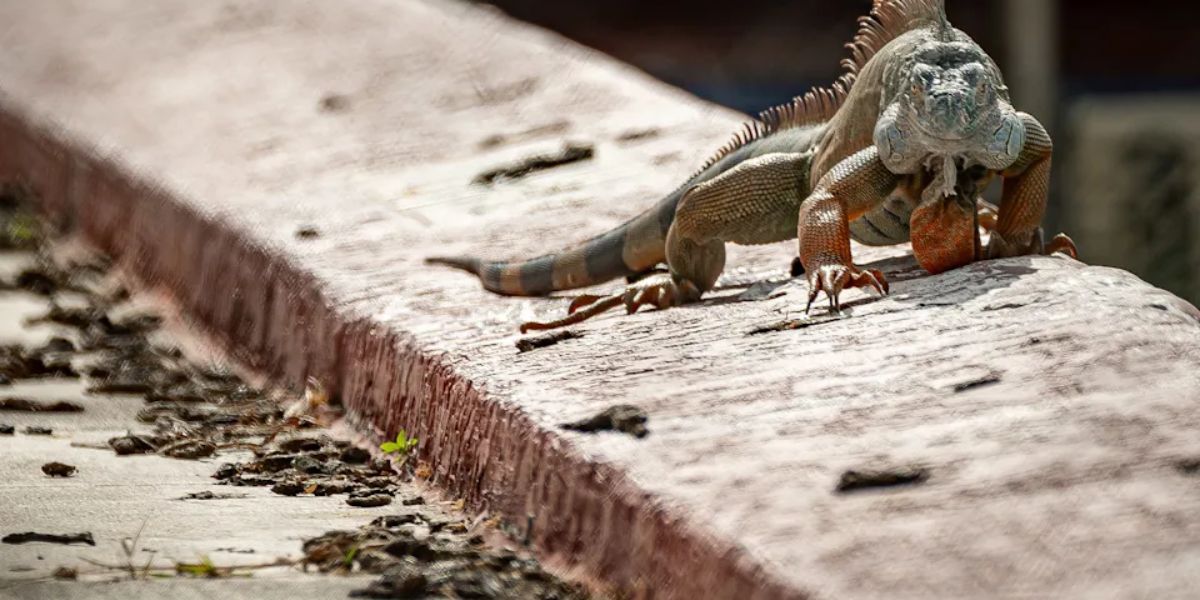Daytona Beach, FL — Residents were in for a surprise Monday morning when Daytona Beach Police officers responded to reports of a large iguana roaming around and disrupting a neighborhood. The situation, which could have been chaotic, quickly turned lighthearted as officers playfully “arrested” the reptile after a brief scuffle.
In a video posted on Facebook, officers are seen wrangling the squirming iguana and safely securing it for removal.
“ANIMAL PLANET — DAYTONA EDITION,” the department joked in the caption. “Just another day on patrol! Our officers responded quickly to help safely capture an unexpected visitor, an iguana found roaming around Daytona Beach. Thanks to quick teamwork, the situation was handled.”
The department even gave the “scaly suspect” a mock mugshot and humorously “charged” it with disorderly conduct, resisting arrest, trespassing, and fleeing.
Are Iguanas Common in Florida?
While the iguana’s appearance may have startled locals, sightings like this are not unusual in parts of Florida. According to The Daytona Beach News-Journal, green iguanas are not native to the state but are well-established across many coastal counties.
Originally native to Central and South America, as well as several Caribbean islands, iguanas were first reported in Florida in the 1960s when they were accidentally brought over on cargo ships from Cuba.
Today, their populations are strongest in the southern half of the state, particularly in:
- Miami-Dade County
- Broward County
- Palm Beach County
- Monroe County
- Collier and Lee Counties
However, reports of iguanas have become increasingly common as far north as Volusia County, which includes Daytona Beach.
Why Iguanas Are a Problem in Florida
Green iguanas are classified as an invasive species by the Florida Fish and Wildlife Conservation Commission (FWC) because they threaten native plants and animals.
The reptiles have been observed consuming tree snails at Bill Baggs Cape Florida State Park and nickerbean plants at Bahia Honda State Park — both vital to Florida’s native ecosystems.
Beyond environmental impact, iguanas often cause property damage and pose health risks to humans.
Common problems caused by green iguanas include:
- Digging burrows that weaken sidewalks, canal banks, and seawalls.
- Feeding on ornamental trees and flowers, damaging landscapes.
- Leaving droppings that can transmit Salmonella to humans through contaminated surfaces.
“Since green iguanas are not native to Florida and pose a threat to native wildlife, they are considered an invasive species,” the FWC said in a statement.
How to Report Iguana Sightings
The Florida Fish and Wildlife Conservation Commission encourages residents to report sightings of nonnative species to help monitor and manage their spread. There are three official ways to do so:
- IveGot1 App: Available for both iPhone and Android. Ideal for lower-priority species like iguanas and small nonnative lizards.
- Online Form: Visit IveGot1.org to report sightings. Users can mark exact locations on a map after creating a free account.
- Invasive Species Hotline: Call 1-888-Ive-Got1 (483-4681) to report high-priority species, such as monitor lizards, tegus, or snakes. The hotline operates Monday–Friday, 8 a.m. to 5 p.m., and includes a voicemail option after hours.
A Wild but Harmless Encounter
Though the iguana’s “arrest” became a viral moment, officials reminded residents to avoid handling wildlife and instead report unusual sightings to the appropriate authorities.
The Daytona Beach Police Department’s humorous approach, combined with its quick response, turned what could have been a tense call into a memorable — and educational — moment for the community.
What are your thoughts on seeing iguanas in Florida neighborhoods? Share your experiences in the comments below.




